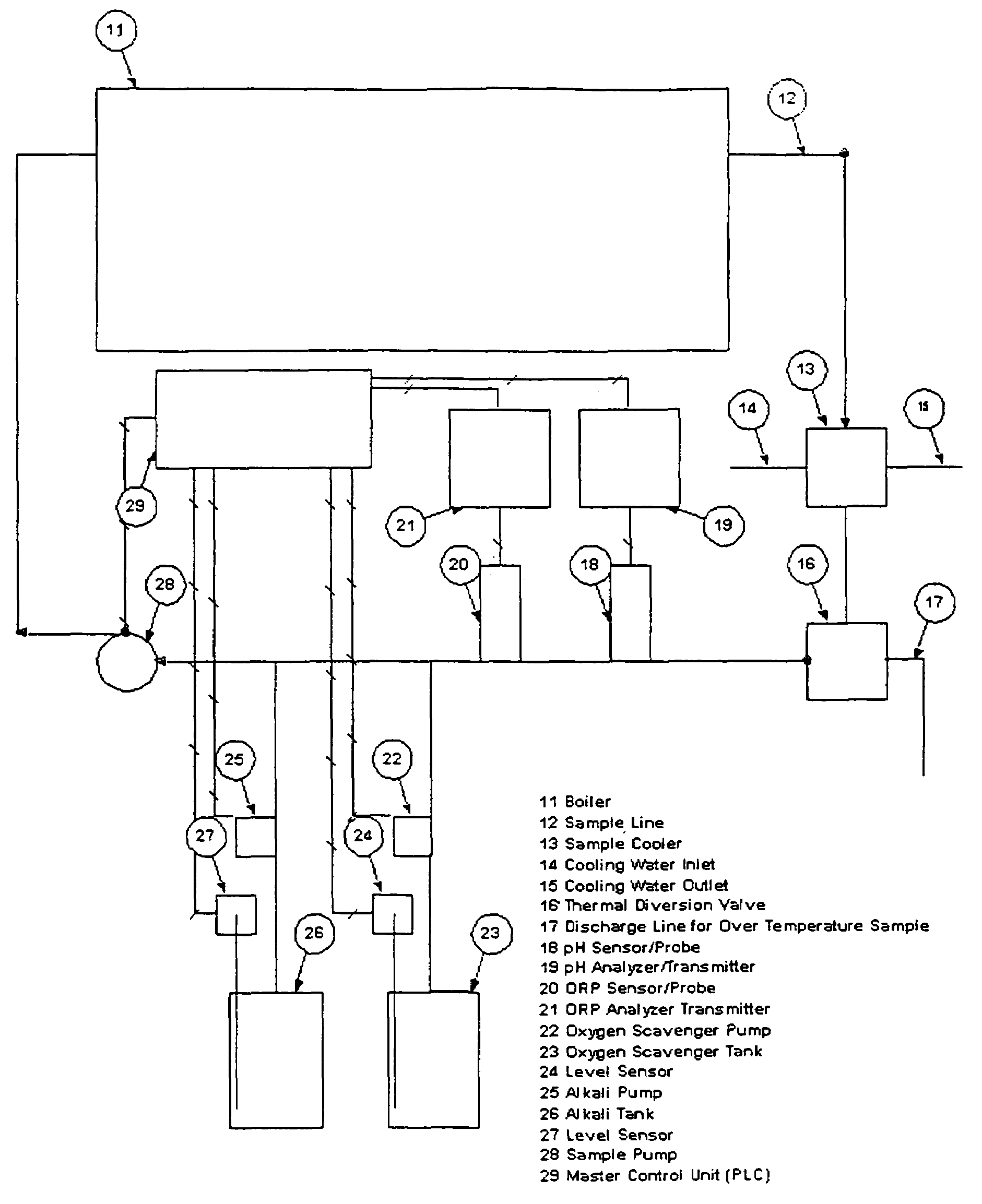Automated process for inhibiting corrosion in an inactive boiler containing an aqueous system
a technology of aqueous system and inactive boiler, which is applied in the direction of reducing corrosion of boiler components, water/sewage treatment by degassing, treating water, etc., can solve the problems of loss of investment in corrosion, corrosion will occur, and nobody monitors the water chemistry of the boiler for months at a tim
- Summary
- Abstract
- Description
- Claims
- Application Information
AI Technical Summary
Benefits of technology
Problems solved by technology
Method used
Image
Examples
example 1
(Automated Process for Inhibiting Corrosion in Inactive Boiler Using Sodium as the Alkaline Chemical and Hydrazine as the Oxygen Scavenger)
[0032]The subject of this is example is a boiler on-board a ship that is laid up awaiting future use. The boiler has a capacity of 5–9 tons. The amount of hydrazine to obtain a minimum amount of hydrazine, equivalent to 200 ppm, is calculated as follows:
[0033]Assume there are 8 ppm oxygen in the water at ambient temperature. The amount of hydrazine needed to maintain a residual of 200 ppm hydrazine is 8+200=208 ppm hydrazine.
[0034]For 5 tons capacity, the amount of hydrazine needed is 208×5×1,000 Kg / 106=1.04 Kg hydrazine.
[0035]The pH of the boiler is measured with a Rosemount model 396 pH. Sufficient sodium hydroxide is added to the water to raise the pH to 10.0. The ORP of the water is measured with a Rosemount model 3960ORP. Sufficient hydrazine is added to water to raise the ORP to −200 mV.
[0036]An apparatus for monitoring the pH and ORP and a...
PUM
| Property | Measurement | Unit |
|---|---|---|
| oxidation-reduction potential | aaaaa | aaaaa |
| oxidation-reduction potential | aaaaa | aaaaa |
| corrosion | aaaaa | aaaaa |
Abstract
Description
Claims
Application Information
 Login to View More
Login to View More - R&D
- Intellectual Property
- Life Sciences
- Materials
- Tech Scout
- Unparalleled Data Quality
- Higher Quality Content
- 60% Fewer Hallucinations
Browse by: Latest US Patents, China's latest patents, Technical Efficacy Thesaurus, Application Domain, Technology Topic, Popular Technical Reports.
© 2025 PatSnap. All rights reserved.Legal|Privacy policy|Modern Slavery Act Transparency Statement|Sitemap|About US| Contact US: help@patsnap.com


